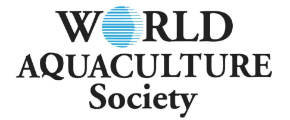SURVEILLANCE PROGRAM AND ANIMAL HEALTH MONITORING: AN INVESTMENT RATHER THAN COST
Disease in aquaculture systems are the outcome of three major components, namely, health of the animal, culture environment conditions and presence of pathogen in the system. The early detection of signs of diseases or poor health is crucial to take measures to minimize the economic impact of diseases. Routine animal health monitoring allows to generate this information for immediate decision-taking such as feeding rate correction, water exchange or even emergency harvest. A well-established surveillance program is the key to achieve the above mentioned results. The surveillance program is designed to focus mainly on primary endemic pathogens in key stages of production as well as in wild. It also includes exotic pathogens which are emerging or present a higher risk as these could be find the way through into the culture system via various means including water currents, importation of shrimp and fish from infected countries or ballast water.
This presentation describes about the current surveillance program at National Aquaculture Group, NAQUA, having around 4500 ha of culture surface. Since the main damage to shrimp industry of Saudi Arabia was caused by WSSV disease in recent years, the major part of the program is adopted for an early detection of WSSV and then the priority goes to TSV as the disease was present in the south of Saudi Arabia few years back. The frequency of sampling for endemic pathogens varies based on the economic impact of the disease, the type of rearing conditions (indoor or outdoor) and also depends on weather conditions as low temperature that does pose a risk factor. The frequency of exotic pathogen surveillance is based on their distribution, economic impact and the risk of introduction. Wild crustacean samples from the premises of farm (intakes, feeder canals etc.) is incorporated as part of surveillance and these samples are tested for endemic pathogens: WSSV and TSV.
This presentation also describes the shrimp health monitoring system and strategies. The objective of this program is to assess the health status of the animals in production systems and detect any possible buildup of diseases. The program describes the importance of obtaining the right sample, the different techniques used for analysis and interpretation of outcomes taking to account environmental factors. It also elaborates the criteria of morphological changes that indicate deviation from optimum health, covering from macroscopic to microscopic changes, the possible causes that may lead to these changes and mitigation measures to decrease the risk of disease outbreak. It is emphasized that health is directly related to productivity and therefore, close monitoring and optimization of animal health is a key tool for profitable farming.










